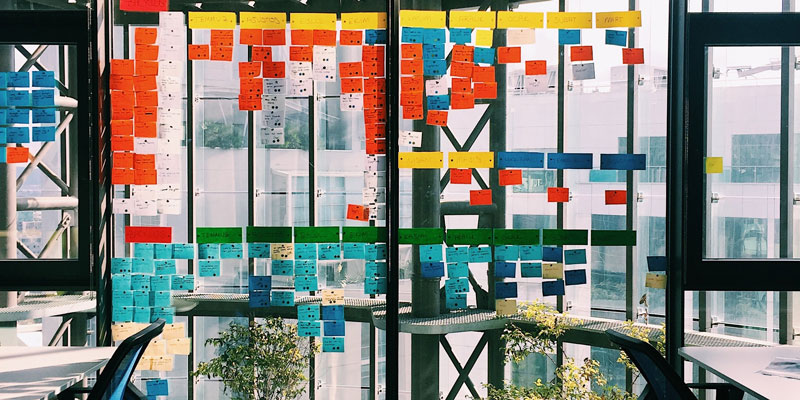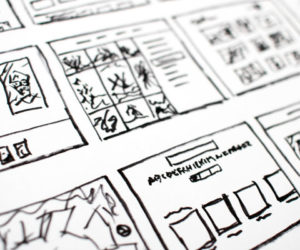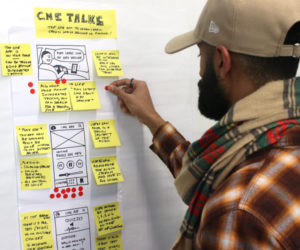You’ve been told you have to participate in a design sprint. Or you’ve decided it’s time to get your project unstuck by setting up a design sprint.
Yet, you’re still not sure how a design sprint truly works, how it feels to be in a small team tasked with making things happen with it.
The following look behind the scene should help you feel confident about what and what not to expect.

Wait, no phones?
Three things surprise first-time participants in a design sprint. And yes, the first one is that phones, tablets, and computers are prohibited inside the room.
Except for specific times allocated for research, design sprints are pen and paper only events.
Why?
Because you want everyone focused on the task at hand. Distractions are too costly. To make sure the company gets a good ROI from the activity, you need to avoid any time-wasting activities.
Remember: a design sprint is a four-day intensive workshop bringing 7 or 8 persons in a room. That’s a lot of resources you can’t afford to waste on Whatsapp messages.
To make sure everyone stays fresh and doesn’t think office errands, frequent 10 to 15-minute breaks are built in the schedule. At least once every two hours. So during the breaks, you can chat away on your phone.
Alone, together
With eight people in a room for four days in a row, you imagine all this time would be spent working as a team, right? Well, no.
A design sprint has to move along swiftly: on the first day, you set the challenges, and on the second, you solve them. Teamwork is too slow for that fast-paced schedule. It would be a waste of time.
Instead, participants spend a lot of time working by themselves:
- coming up with the sprint questions
- sketching the solution
Each participant should come up with his or her storyboard of a solution to present to the whole crew.
Design sprints are teamwork mostly done individually. It works best that way, and it’s fast.
Oh my, the speed!
If there’s one thing that takes everyone by surprise, it’s the speed at which things evolve during a design sprint.
People are not used to moving at warp speed. In a design sprint, there’s no second-guessing. Instead of waiting for a solution that is perfect at 95 %, you go with a 5 % OK solution.
It’s more important to start or move forward than to keep searching for the perfect solution. There’ll be plenty of time to correct the course later.
What is crucial is to find a solution that will allow you to keep moving. You will get answers one step at a time, as you move along.
Keep in mind that you will not solve everything in four days.
What outcomes should you reasonably expect from a design sprint?
Design sprints are meant to help do two things: get started or get unstuck. That’s it.
At the end of the process, you should expect to have jumpstarted your project and have enough material to develop user stories for two or three sprints.
These are typical outputs of a design sprint:
- You have identified the needs of potential customers.
- You have identified obstacles you’re going to face.
- You have put your finger on what you think you can resolve in a few days.
- You have a working prototype to test with your prospects.
- You have already got some feedback from your target audience, and you know what to improve on.
One of the surprising benefits of design sprints is the fact that people who don’t see themselves as creative have the chance to find out that, with the right process, anyone can be creative. That’s very satisfying!
Design sprints also benefit your company differently: if the members of your team have never worked with agile, lean methodologies, the workshop will make these very appealing to them. They will become comfortable with an iterative process.
And they will see how quickly they can get results.
Do you want to figure out how your team could benefit from a design sprint? Talk to us.








